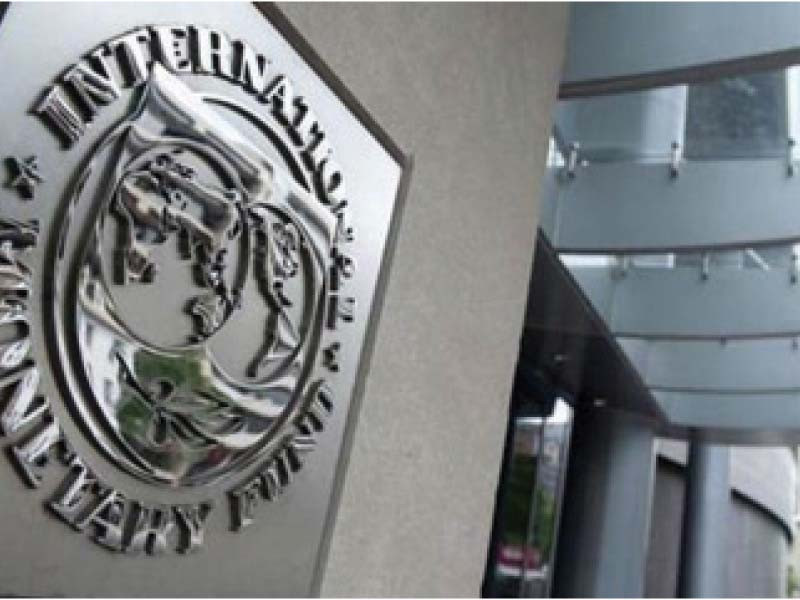IMF sticks to 2.5% growth forecast for Pakistan | The Express Tribune
 [ad_1]
[ad_1]
The International Monetary Fund (IMF) on Tuesday kept Pakistan’s economic growth forecast unchanged at 2.5% but slashed inflation rate to 23.6% for the current fiscal year, in a move that is largely in line with official projections.
The global lender released its flagship report, the World Economic Outlook, at the start of annual meetings in Morocco.
It left Pakistan’s economic growth projection unchanged at 2.5%, which is lower than the official target by 1%. But it is consistent with the figure the IMF gave in its last report.
Like the World Bank, the IMF did not accept Pakistan’s 0.3% GDP growth claim for last year. The new report has shown an economic contraction of 0.5% in the previous fiscal year, which was the last year of the Pakistan Democratic Movement (PDM) government.
The previous government had pressurised the Pakistan Bureau of Statistics (PBS) to show a positive growth.
The 2.5% growth projection is the highest by any international financial institution. The World Bank has given a 1.7% growth forecast while the Asian Development Bank has projected growth of 1.9%. The State Bank of Pakistan (SBP) sees growth in the vicinity of 2%.
Pakistan’s annual population growth is 2.6% and economic growth below the increasing ratio of population means that there will be higher unemployment and poverty in the country.
In its report, the IMF projected Pakistan’s economic growth at 5% by the year 2028, a forecast that is subject to changes due to rapid economic developments taking place in the country.
The IMF cut Pakistan’s average annual inflation forecast to 23.6% for the current fiscal year, which was 2.3% below the projection made in the IMF’s staff-level report in July this year. The global lender predicted an annual inflation rate of 17.6% in June next year.
The 23.6% inflation is still significantly higher than the official target set by the central bank and the federal government.
Inflation in September spiked to 31.4% but the SBP deputy governor said last week that the pace of increase would start slowing down from October.
Inflation has remained on the rise due to administered increase in prices of energy, petroleum products and currency devaluation. On the back of military-pushed action, the rupee has recovered to Rs281 to a dollar in inter-bank market from the peak of Rs307 last month.
Prime Minister Anwaarul Haq Kakar said on Monday that had the government not initiated a crackdown on currency smuggling, the rupee-dollar parity would have crossed 350.
The IMF said that Pakistan’s current account deficit may remain around 1.8% of gross domestic product (GDP) in the current fiscal year, which was in line with its last forecast but was slightly higher than the official target.
The central bank reported on Tuesday that remittances came in at $2.2 billion in September, down 11.5% compared to the same month of last year. During the first quarter, Pakistan received $6.3 billion in remittances, down by $1.6 billion or one-fifth.
The IMF projected that the unemployment rate would slow down to 8% in the current fiscal year, from 8.5% last year.
It said that global growth would slow down from 3.5% in 2022 to 3% this year. The overall growth is projected to further slow down to 2.9% next year, a 0.1-percentage-point downgrade for 2024 from July projections. “This remains well below the historical average,” it added.
The global economy continues to recover slowly from the blows of the pandemic, Russia’s invasion of Ukraine, and the cost-of-living crisis, it added.
But headline inflation continues to decelerate from 9.2% in 2022, on a year-over-year basis, to 5.9% this year. This would further slow down to 4.8% next year, it added.
Core inflation, excluding food and energy prices, is also projected to decline, albeit more gradually than headline inflation, to 4.5% in 2024.
As a result, projections are increasingly consistent with a “soft landing” scenario, bringing inflation down without a major downturn in activity, especially in the United States, where the forecast increase in unemployment is very modest, from 3.6% to 3.9% by 2025.
The IMF said that important divergences are appearing, as the slowdown is more pronounced in advanced economies than in emerging markets and developing ones. Many emerging market economies proved quite resilient and surprised on the upside, with the notable exception of China, facing growing headwinds from its real estate crisis and weakening confidence.
Three global forces are at play. First, the recovery in services is almost complete. Second, part of the slowdown is the result of the tighter monetary policy necessary to bring inflation down. Third, inflation and activity are shaped by the incidence of last year’s commodity price shock.
Published in The Express Tribune, October 11th, 2023.
Like Business on Facebook, follow @TribuneBiz on Twitter to stay informed and join in the conversation.
Comments
Post a Comment